Campus is here! The new expansion is the eighth major DLC for Cities: Skylines, and gives us a major overhaul of higher education. It leans on the mechanics in Parklife and Industries to let us make education a more significant and functional part of our cities. It’s a big improvement on the previously passive system of simply dropping a few university buildings in population centres.
I’ve had a chance to play with the new campus types and fully level one of them up. Here’s what I think.
Patch 1.12 free update
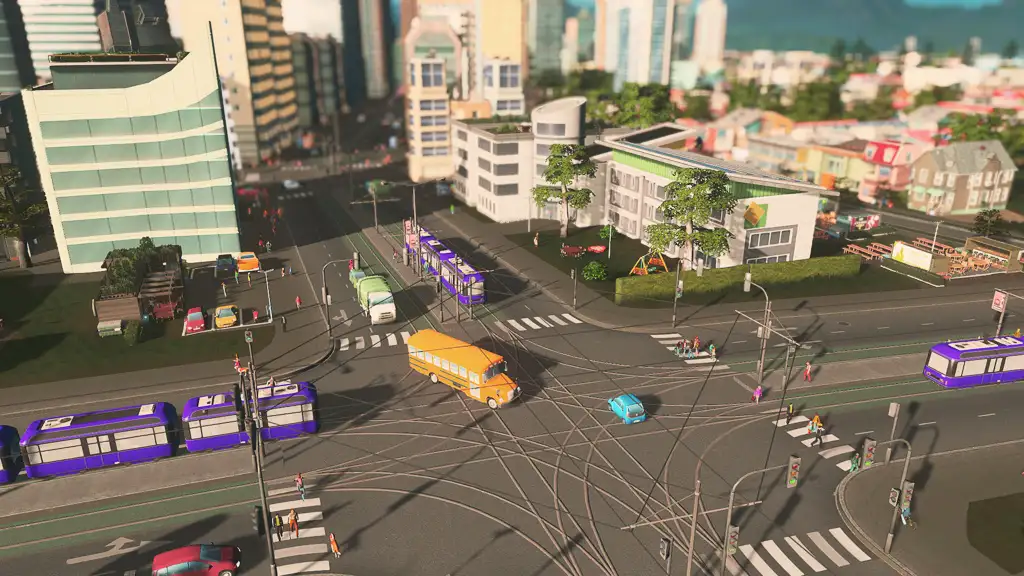
Let’s cover this first. The 1.12 update is available to all players, whether they have the DLC or not. It adds the Public Library, a really interesting addition I’ll mention later, as well as the Academic Library. We now have the ability to choose what buses run on individual lines, which allows you to some lines to run the new Yellow School bus (but also choose buses you’ve downloaded from Steam Workshop. Hopefully the devs will roll out this previously mod-only feature to the other transport types).
Industry 4.0 is a significant new city policy that helps to solve a key late-game problem when your citizens are too educated to gladly take industrial jobs. It increases the education requirements for all jobs in affected areas, meaning well-educated residents will more readily take those jobs, helping solve a problem I’ve written about before. It does also cut job numbers - and reminds me of the functionality of the IT Cluster specialisation.
Elsewhere, citizens have now got job titles!
Campus DLC overview
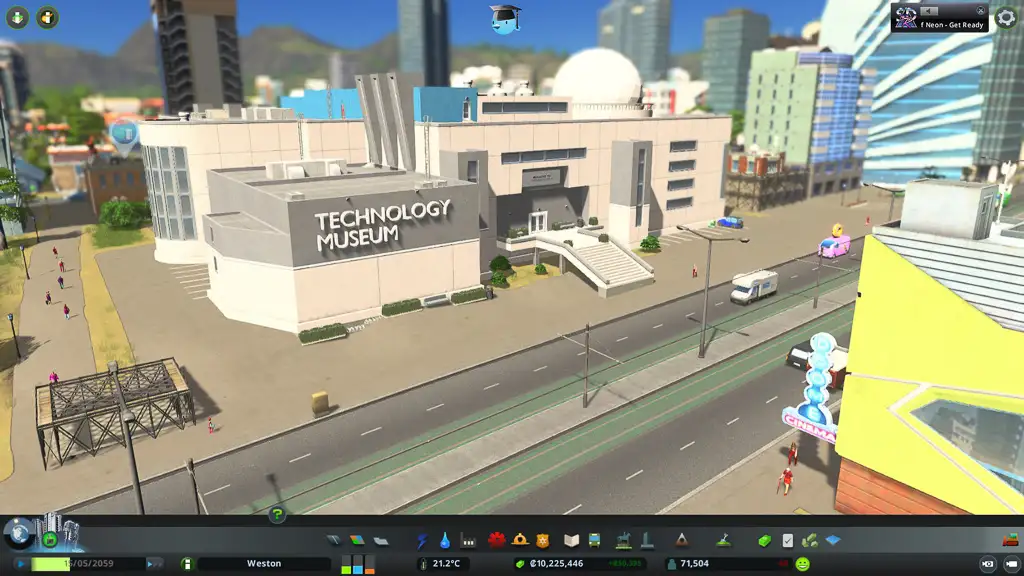
The Campus expansion answers a real demand from players. A lot of us build campuses in our cities already - it’s just that they don’t do anything. By sorting through all the unique buildings, it’s possible to design convincing looking campus arrangement, with an actual University building at its centre. But now, that exercise isn’t only for show: the new universities can satisfy the city’s educational needs, generate money, bring in tourists and even improve city services.
There’s a lot here. We get three campus types: Trade School, Liberal Arts College and University. There are also 5 huge sports arenas that function like the Stadium from the Match Day DLC, but become part of the university when inside its zoned area. As well as huge range of new buildings and assets, there’s also five new maps to play on, as well as a range of new policies.
Most of the buildings can be snapped to footpaths as well as roads, which is an excellent touch, and opens the way to much more creative layouts that would be possible if they all had to follow roads.
When implemented, campuses are genuinely sprawling. If you’ve put down all the buildings, they completely define whole parts of the city simply because of their footprint. The new institutions effectively replace the current single University building - but they also compete. Students, as far as I can tell, will still study at their local institution - or wherever they can get a place. For that reason, it’s worth sending all your students to the new type of university, since there, they’ll pay fees.
New and distinct architecture for the city
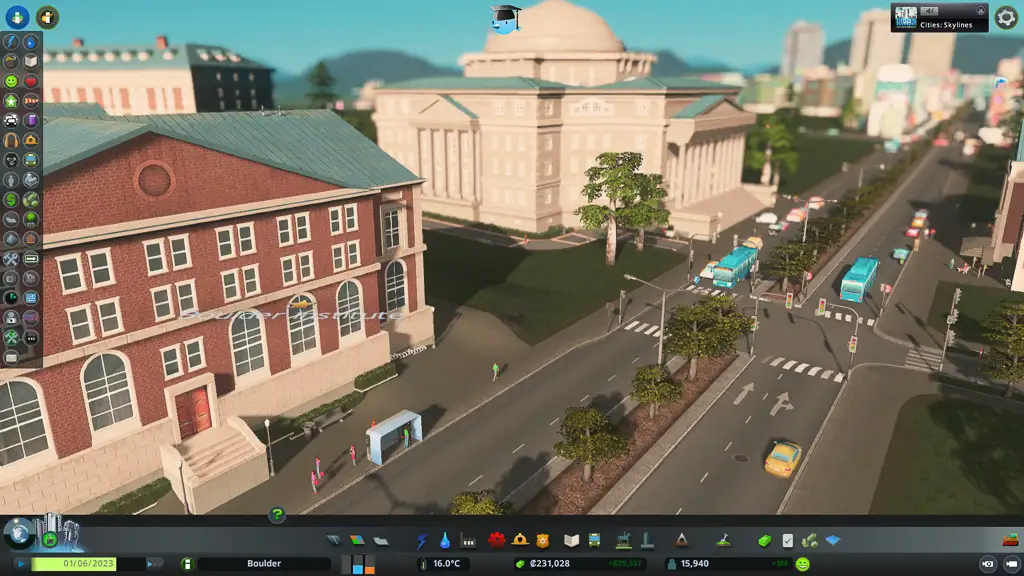
Each campus type has a distinct architectural style and the new assets looks brilliant. The designers have done a great job. The three types share some common buildings (with unique designs) like the cafeteria, dormitory and library, but have specific supporting buildings like the Media Lab, IT Club and Dance Club. There’s a huge array of options, meaning you can build a major institution without needing to reuse buildings.
There’s also a lot of detail and description. You don’t get the sense of a developer just going through the motions after their 8th expansion. Instead you get details about how raucous the annual toga party was, sounds of a lively social life emanating from the maths club, and cheers as your students fling their hats into the air at their graduation ceremony.
Every academic work has a title and description, and the new models have had plenty of attention too. It’s great to see my university students on the American football field and lining up against a team from another town.
Unlike in Parklife, it’s not possible to mix and match building types across university types - a Trade School building can only be built inside a Trade School. It’s also worth saying the campus zones are on the same level as Industries DLC zones, so they can’t overlap each other.
Levelling up and micromanagement
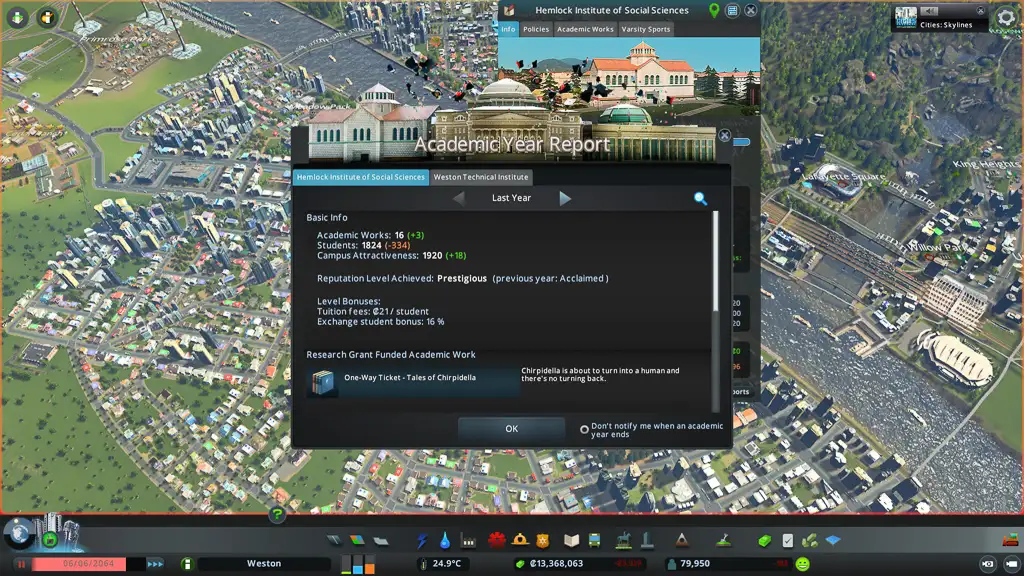
As with parks and industrial areas, there’s a levelling up mini-game based around the academic year. You’ll need to generate the required academic works, student numbers and campus attractiveness to move through the ranks towards Prestigious. In a departure from previous DLC, you’ll also need to maintain them. If your student numbers fall, so will the institution’s reputation.
That’s not like Parklife or Industries, where once you hit max rank, that’s it and you move to the next project. Here, you’ll want to be careful to avoid anything drastic like a major relocation if you want to maintain your stature. If your student numbers tank during the year (thanks to city demographic shifts, usually), you’ll lose a level and take a hit to tuition fees.
To be honest, I’ve got mixed feelings about this. On one hand, I like the idea of ongoing management and the fact that something could decline, but it adds extra micromanagement and… does it fit in Cities: Skylines? This game is more of a sandbox than a serious simulation of managing a city. Anyway, that’s a different conversation.
Let’s talk about the mechanics in more detail. Each year, the university can produce academic works. If you give them a research grant, you’ll guarantee one work. The others are based on a % chance per 500 students. That chance improves as you add buildings, and you can add more funding to academic staff to improve it. You’ll need 16 works in total hit Prestigious rank (as well as 1800 students and 1800 attractiveness).
You can house your academic works in one of the three new Academic Library unique buildings. These function like ordinary unique buildings but become more attractive the more works they are home to. This feature actually gave me a bit of nostalgia for how art works in Civilization V.
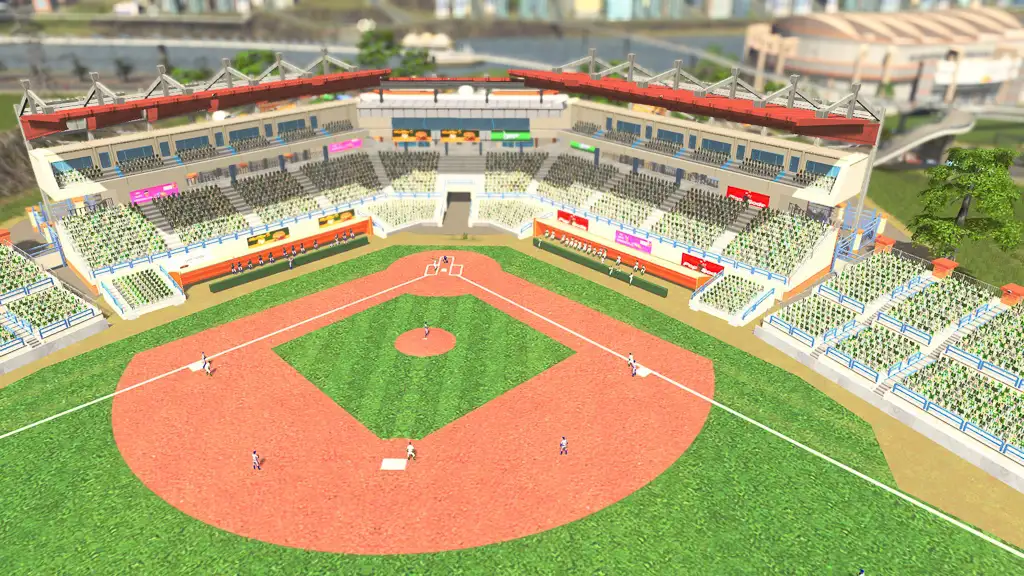
Campus attractiveness is a familiar rating that increases as you add new buildings, just like Parklife. However, it is also tied to the new Varsity Sports system. By building one of the new arenas inside a campus zone, the team will now be a Varsity team and play against teams from competing colleges. The wins, losses and trophies are all counted and added to your campus attractiveness, which is great way of bringing all these mechanics together.
The result of these new systems is that you’ll need to work quite hard over quite a long time to rank up the university, which is a good thing. It means its story will be tightly tied to that of your city’s.
As the university levels up, tuition fees per student increase, as does the number of students coming from other towns - a completely new feature - who also count towards tourism in the city. Eventually, you’ll even secure sponsorship for your Varsity teams, reducing their upkeep.
New faculties to boost city services

The three campus types each have three faculties - a large, expensive teaching building that can serve 1,000 students. Each faculty has a specific city service benefit. The Trade School School of Tourism and Travel, for example, increases the attractiveness and entertainment provided by leisure buildings and pushes up commercial zones income. The School of Environmental Studies at the Liberal Arts College reduces garbage accumulation, and the School of Law reduces crime rate and police upkeep.
I really like how the faculties let you further lean into what your city is about. I’ve gone all out for tourism, you can choose the right university to support that.
One thing I couldn’t work out is why the faculties are so far apart in price. The Policy Academy costs 75,000 while the School of Science is 165,000 - and more than double the upkeep. Are its bonuses stronger?
All in all, Campus leans quite heavily on ideas introduced in previous DLC. But that’s not a criticism: Parklife and Industries, in particular, were great additions. It also does a better job of tying ideas together than we’ve seen before, and adds a new way to define your city and to build very distinctive areas.
But there are some new ideas. The Public Library is a good example. When residents visit, they have a chance to gain an educational level. That helps address the problems when setting up new neighbourhoods, since adults move in uneducated, and are too old to go to school. This way, they can still progress without you need to wait for the next generation.
Campus: should you buy it?
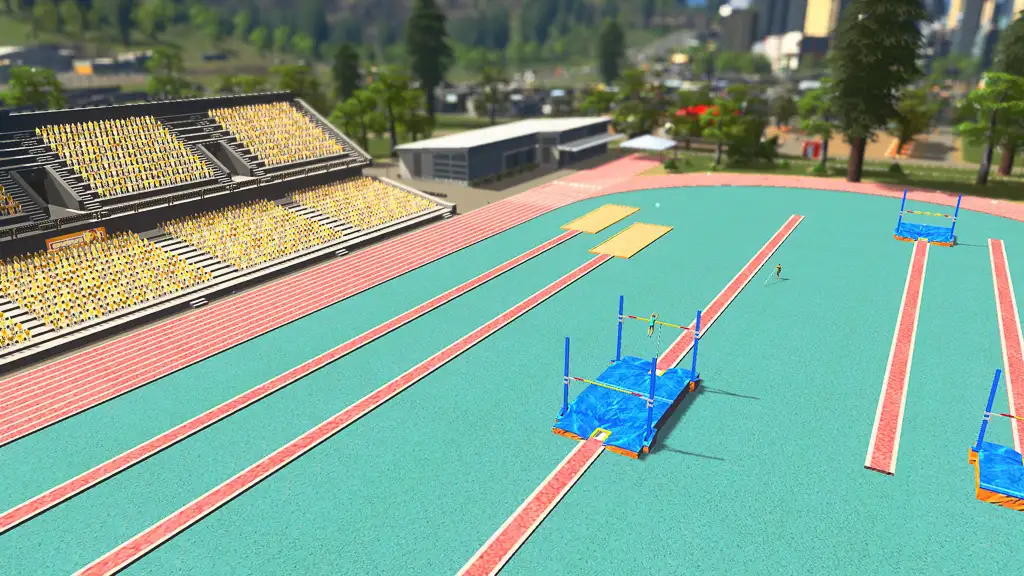
I think Campus is a very good expansion. It’s not groundbreaking: it reuses and remixes ideas from Parklife, Industries, Match Day and Concerts. That’s no bad thing - Parklife and Industries, especially - added very welcome variety, depth and control. Here, those ideas are used to add a deep new system for higher education. The interlinked systems of student numbers, attractiveness, sporting success sit alongside entirely new mechanics like the academic works to create a satisfyingly deep new toy set to play with.
On top of that, the execution is great. There are lots of buildings with a consistently high level of quality. The architectural variety is excellent and the designers have successfully captured what modern universities actually look like.
Bottom line: I think Campus is a very good DLC and I’m enjoying it a lot. It completely revolutionises the previously passive higher education system in the game. But, if you’re just picking the game up now, I’d prioritise getting some of the other expansions first. See my recommendations here.